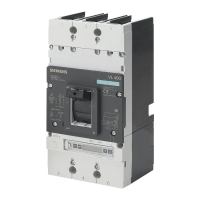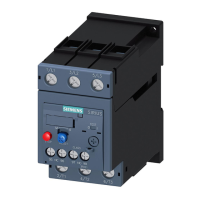Application planning
5.8 Use in series connection
3VL IEC molded case circuit breakers
System Manual, 11/2013, 110 0110 - 02 DS 03
69
Figure 5-6 Standard ETU
-25 °C to +70 °C, ☂ 95%
The 3VL electronic trip units are designed for use in ambient temperatures up to 70 °C and a
relative humidity (non-condensing) up to 95%.
Electronic trip unit LCD ETU
Figure 5-7 LCD-ETU
-25 °C to +70 °C, ☂ 95%
The high-quality electronic trip units LCD ETUs are designed for use in ambient
temperatures up to 70 °C and a relative humidity (non-condensing) up to 95%. The
appropriate correction factors must be applied for ambient temperatures above 50 °C.
In the case of molded case circuit breakers connected in series, the overload and short-
circuit protection is described as "selective" when, from the point of view of the direction of
energy flow, only the circuit breaker immediately upstream of the fault trips.
The selectivity can be calculated in the
by comparing the time/current
characteristics. In the short-circuit range, this comparison leads to values that are too low.
The reason for this is that the trip unit behaves differently in the case of short-circuit currents
compared to its long-term behavior, e.g. in the case of overloads.
If the
short-circuit currents differ sufficiently
at the installation points of two molded case
circuit breakers, the instantaneous short-circuit releases can normally be set such that if a
short-circuit occurs behind the downstream circuit breaker, only this downstream breaker
trips.
If the
short-circuit currents are approximately the same
at the installation points of the
breakers, the grading of the tripping currents of the short-circuit releases only enables
selectivity up to a specific short-circuit current .

